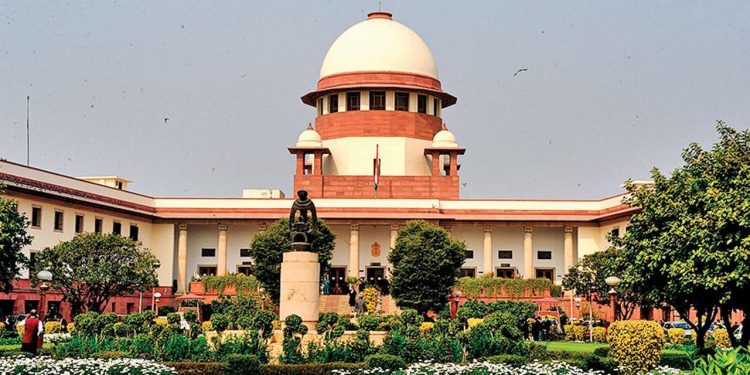New Delhi: The Supreme Court Tuesday commuted the death sentence of a man, who had kidnapped and killed a seven-year-old boy in Tamil Nadu in 2009, to 20-year imprisonment, saying there was “possibility of reformation” even though he has committed a ghastly crime.
Observing that there was no reason to doubt the guilt of the man, a bench headed by Chief Justice D Y Chandrachud held that the man would undergo life imprisonment for not less than 20 years without reprieve or remission.
The commutation of the death sentence came after taking note of the arguments that hearing on the sentence has not been conducted separately in the trial court and mitigating circumstances have not been considered in the appellate courts before awarding the capital punishment.
The top court’s judgement came on a review plea filed by Sundar alias Sundarrajan who picked up the victim while he was returning from school in the school van July 27, 2009.
On the same night, the victim’s mother received a call on her mobile phone from Sundar, demanding a ransom of Rs 5 lakh for his release. July 30, 2009, the police raided Sundar’s house and arrested him along with a co-accused who was later acquitted. He confessed to strangling the boy, putting his body in a gunny bag and throwing it in the Meerankulam tank.
The Madras High Court had September 30, 2010, confirmed the conviction and the award of the death sentence, which was upheld by the top court February 5, 2013.
Sundar had filed a plea before the top court in 2013 seeking a review of his conviction for the offence of murder and the award of death sentence on the basis of the decision of a Constitution Bench in Mohd. Arif vs Registrar, Supreme Court of India.
The Constitution Bench had held that review petitions arising from conviction and the imposition of the sentence of death must be heard in open court and cannot be disposed of by circulation.
In its 51-page verdict, the apex court took note of the man’s submission that he could not communicate mitigating circumstances bearing on his sentencing decision to the lawyer and his relatives, who being poor and uneducated, could not properly contest the case for him.
The court said on the basis of these details, it cannot be said that there is no possibility of reformation even though the petitioner has committed a ghastly crime.
“We must consider several mitigating factors: the petitioner has no prior antecedents, was 23 years old when he committed the crime and has been in prison since 2009 where his conduct has been satisfactory, except for the attempt to escape prison in 2013.
“The petitioner is suffering from a case of systemic hypertension and has attempted to acquire some basic education in the form of a diploma in food catering. The acquisition of a vocation in jail has an important bearing on his ability to lead a gainful life,” the bench said.
The top court said even though the crime committed by the man is unquestionably grave and unpardonable, it is not appropriate to affirm the death sentence that was awarded to him.
“As we have discussed, the ‘rarest of rare’ doctrine requires that the death sentence not be imposed only by taking into account the grave nature of crime but only if there is no possibility of reformation in a criminal.
“Considering the facts of the instant case, we are of the considered view that the petitioner must undergo life imprisonment for not less than 20 years without remission of sentence,” the bench, also comprising Justices Hima Kohli and P S Narasimha, said.
It also issued a notice to the inspector of police, Kammapuram police station in Cuddalore district as to why action should not be taken in pursuance to the affidavit filed in court concealing the conduct of the petitioner.
Accordingly, the Registry is directed to register the matter as a suo motu proceeding for contempt of court, the bench said.
The top court said that it is the duty of the court to inquire into mitigating circumstances as well as to foreclose the possibility of reformation and rehabilitation before imposing the death penalty.
“The state must equally place all material and circumstances on the record bearing on the probability of reform. Many such materials and aspects are within the knowledge of the state which has had custody of the accused both before and after the conviction.
“Moreover, the court cannot be an indifferent bystander in the process. The process and powers of the court may be utilised to ensure that such material is made available to it to form a just sentencing decision bearing on the probability of reform,” the bench said.
PTI






































